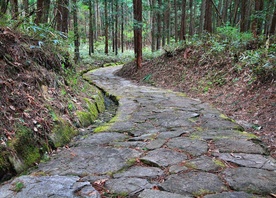This week is International Whisky Day so we thought we would raise a wee dram to ten of the best Japanese whiskies.

Intro
It’s International Whisky Day this week and what better way to celebrate than with a list of the best Japanese whiskies? For a whole generation, Bill Murray’s character lifting a glass to toast ‘Suntory Time’, may have been their first introduction to the world of Japanese whisky, but the country’s love affair with whisky goes back much further than Sofia Coppola’s Oscar-winning Lost in Translation. Hardcore whisky lovers have known about the secret of Japan’s premium quality whisky distilleries for many years now, but even though Japan is no longer the hidden gem of the whisky world, they’re still considered among the very best and most exclusive producers, placing the country side by side with Kentucky, USA, and Scotland. So let’s raise a glass to Japan on International Whisky Day! Want to go one better? With a Japan Rail Pass for unlimited travel on the country’s domestic rail network you can even go on a tour of Japan’s whisky distilleries to celebrate and sample all the whiskies on our list…
Ten Great Japanese Whiskies
Here’s 10 of the best for beginners and connoisseurs to consider pouring on International Whisky Day 2025.
- The Yamazaki Sherry Cask
Once voted the best in the world by The Whisky Bible, The Yamazaki Sherry Cask simply had to make this list. This blend is married in casks that previously held Oloroso sherry for three years with flavours of raisins, clove and chocolate. Alternatively, try Yamazaki 12 which is regarded as the quintessential Japanese whisky.
2. Nikka Coffey Malt Whisky
This has nothing to do with ‘coffee’ and everything to do with Aeneas Coffey, an Irishman who perfected a variation of the whisky ‘still’. Named in his honour, this whisky is made from 100% malted barley and has a bourbon-like flavour profile.
3. Hibiki 21-year-old
Winner of the world’s best blended whisky at the 2013 World Whisky Awards. Blending is one of the most important techniques in the craft of Japanese whisky making and this is one of the finest examples you will find anywhere.
4. Yoichi Single Malt
Smoky, peaty and coal-fired, this single malt is produced at Yoichi and is Japan’s answer to Scotland’s famous Islay whisky.
5. Chichibu Port Pipe
Founded in 2008, Chichibu are ‘new kids on the block’, but this single malt aged in former port barrels is one to look out for.
6. Ohishi Single Sherry Cask
Uniquely made from two different types of rice (gohyakumanishi and mocha) and aged in sherry casks, this is a non-traditional whisky that is more like a Japanese rice wine, but is well worth a try.
7. The Chita Distiller’s Reserve
A high-quality single grain whisky from Suntory matured in former wine, sherry, and bourbon casks.
8. Miyagikyo Single Malt
The perfect introductory Japanese single malt from the masters at Nikka.
9. Ichiro’s Malt Double Distilleries
The double in the name comes from the fact that this single malt hails from the Hanyu distillery built by Ichiro Akuto's grandfather with malt from the Chichibu distillery - two distilleries come together to create one great whisky.
10. Kaiyo Mizunara Oak Cask Strength
Precious Mizunara - or Japanese Oak - is used in the casks which mature this whisky from Kaiyo, which is also shipped off to sea for a further period of maturation.

How to enjoy Japanese whisky
Whisky with hot water? Or whisky served in a tall glass with ice and sparkling water? Let’s take a look at some of the most unusual ways whisky can be served in Japan. Like most spirits, Japanese whisky can be enjoyed on the rocks, neat (known as ‘straight’ in Japan or requested as 'Roku de'), or with a splash of water (mizuwari = cut with water) which is often the preference for fans of traditional Scottish single malts or high-quality American bourbons too. However, there are some uniquely Japanese ways of enjoying whisky. For instance, 'oyuwari', which is whisky with hot water. The highball - basically whisky served with ice and carbonated (sparkling water) in a tall ‘highball’ glass - is also hugely popular in Japan, so much so it is available everywhere from izakaya to hotels, restaurants and convenience stores. Overall, on the rocks (Roku de) or as a highball, is usually the most common way you’ll see whisky served in Japan although 'cut with water' is also popular. The Colourful History of Japanese Whisky
What makes Japanese whisky so special?
Experts say it is the purity of the water, which is often taken from snow melt, from Mt Fuji or the Southern Japanese Alps for example, or from spring water, combined with the clean air, mineral-rich soil, and warmer climate (as opposed to Scotland or Ireland) thanks to the country’s geographical position, all of which results in a unique flavour profile. Either way, Japanese whisky is distinct, special and has been winning global awards for its quality for decades including The Whisky Bible’s coveted Best Whisky in the World award. The premium, aged varieties also have a reputation for being increasingly hard to find, making them highly collectible, due to shortages caused by the high demand internationally since the popularity of Japanese whisky skyrocketed among knowledgeable drinkers around the world. Of course, it is not just drinking Japanese whisky that makes it special, but where it is produced and the opportunity to easily visit these incredible locations. With several distilleries just a short train ride from Tokyo and others in eye-popping locations, such as the Mars Shinshu distillery which is 2,600ft above sea level in snow capped mountains, Japan is a must-visit country for whisky lovers.
Can you visit Japan’s whisky distilleries?
Yes, you can - especially with a Japan Rail Pass. Nikka and Suntory are Japan’s biggest producers of whisky and have several distilleries across the country, but there are also a number of smaller, more alternative whisky producers whose operations are well worth a visit too. Scotland and Kentucky, USA, might outnumber Japan for volume, but we don’t think any country can rival Japan for the beauty, uniqueness and must-visit locations of its distilleries. Here are a selection:
- Yoichi (Nikka)
Surrounded by mountains and the sea, and founded in 1934, Yoichi distillery’s cold, coastal location was specifically chosen by Masataka Taketsuru to replicate the Scottish Highlands and is said to imbue its whisky with a similar flavour profile to an Islay scotch whisky.
- Miyagikyo (Nikka)
A picturesque distillery located in the mountains near Sendai City in northern Japan. Miyagikyo is surrounded by forests and features a landscaped Japanese garden in a traditional style.
- Hakushu (Suntory)
Easily one of the most beautiful distilleries to visit in all of Japan, Hakushu can be found in the forested mountains of the Southern Japanese Alps, approximately two and a half hours west of Tokyo by train.
- Yamazaki (Suntory)
The godfather of Japanese whisky distilleries. A 15-minute train ride from Kyoto, Yamazaki was founded in 1924 by Suntory’s Shinjiro Torii and boasts a whisky library with more than 7,000 catalogued bottles. Whisky lovers from all over the world travel to visit Yamazaki distillery and for good reason.
- Mars Shinshu (Mars)
Situated at altitude (2,600ft) in a stunning wooded area and blanketed with snow in winter, this unique distillery stands out on the list for its location alone and has a history dating back to the 1940s.
- Chichibu (Chichibu)
Founded in 2008 and located at the former Hanyu site, about an hour from Tokyo, this is a small distillery making a big name for itself.
- Onishi (Onishi)
Located on the Kuma River, Onishi is known for (unusually) using two different types of rice, rather than the traditional methods, to distil its whisky
- Fuji-Gotemba (Kirin)
Just two hours from Tokyo and located at the base of the beautiful and iconic Mount Fuji with its pure water and mineral-rich soil, this distillery is owned by Kirin and was founded by a partnership between Seagram’s, Chivas Brothers and Four Roses.

Bonus Recommendations
Japan’s incredible whiskies aren’t your only option while exploring Japan with the JR Pass. Let’s take a look at some alternatives as recommended by our experts.
- Looking for a more traditional Japanese beverage? Read our Beginners Guide to Sake for everything you need to know about Japan’s most famous alcoholic drink.
- Need a caffeine boost? Japan’s coffee culture is hip and thriving. Find out more in our guide to Coffee Culture in Japan.
- Want to find out more about Japan’s famous tea ceremonies and love of green tea? Our article on what it’s like to experience a Japanese Tea Ceremony has everything you need to know.
- Whisky is the only import that Japan has perfected and taken to new levels. Read our guide to Japan for Beer Lovers to find out more about the country’s thriving craft beer scene and major producers.




